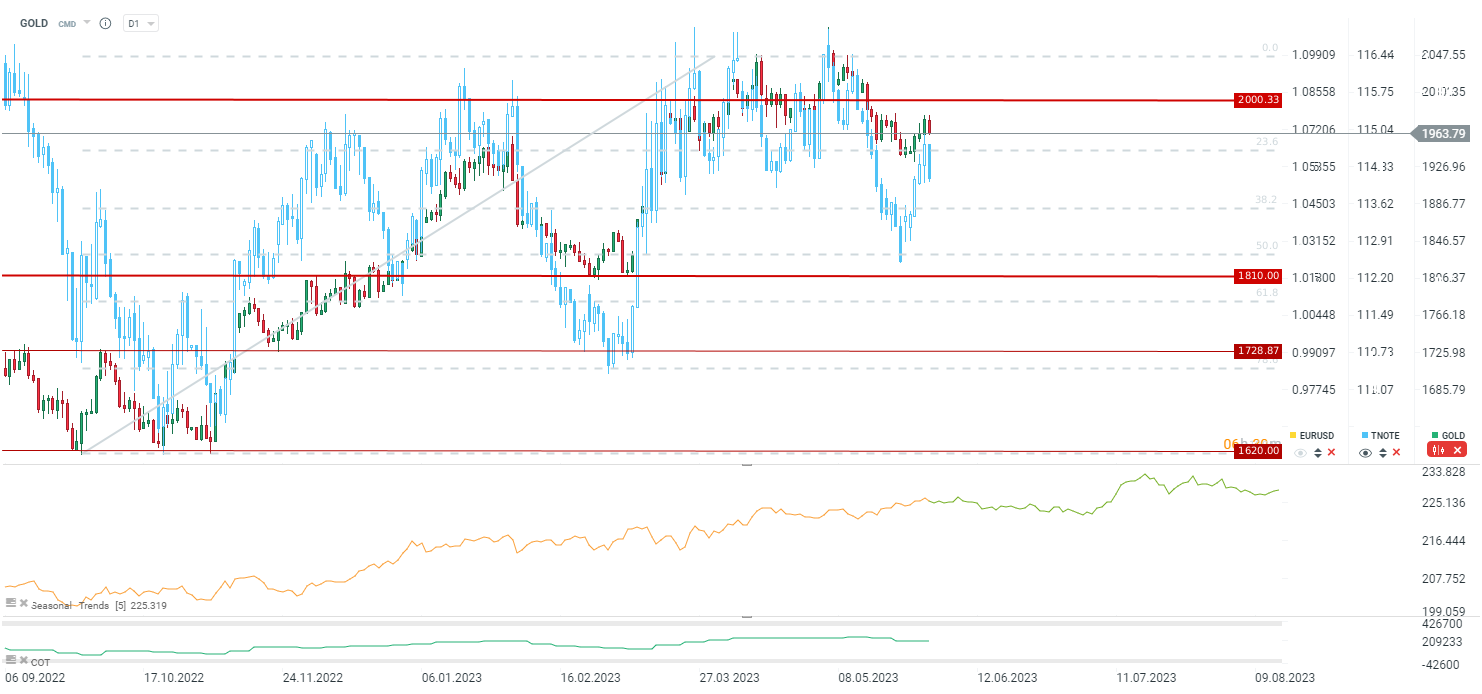It is worth noting that there has been a significant increase in the unemployment rate, which could be a signal to the Fed that their tightening policy is starting to take effect. It is also important to consider that the Non-Farm Payrolls report is a survey of businesses, while household surveys have shown a substantial decline in employment.
Although the data was strong, the most likely scenario is that the Fed will maintain interest rates in June, in line with their previous communication.
Nevertheless, today we are observing an increase in yields and a slight correction in gold. Yesterday's gains have been erased, and gold is currently approaching a test around $1960 per ounce. Key support is found around the $1945-1950 per ounce level. Gold has a stronger correlation with yields in the longer term, but in the short term, especially in recent sessions, we have seen an almost perfect correlation with EURUSD. When the path to a stronger rebound in EURUSD opens up, gold may rally back towards $2000. Seasonality suggests that the biggest gains should begin in early July, following an initial consolidation.

Source: xStation5
Daily Summary: End of the week in the red, tech rally waning
🔝Silver Jumps 10% Weekly, up 120% YTD
Chart of the day - SILVER (12.12.2025)
Daily summary: SILVER at a new ATH, EURUSD at its highest since October


